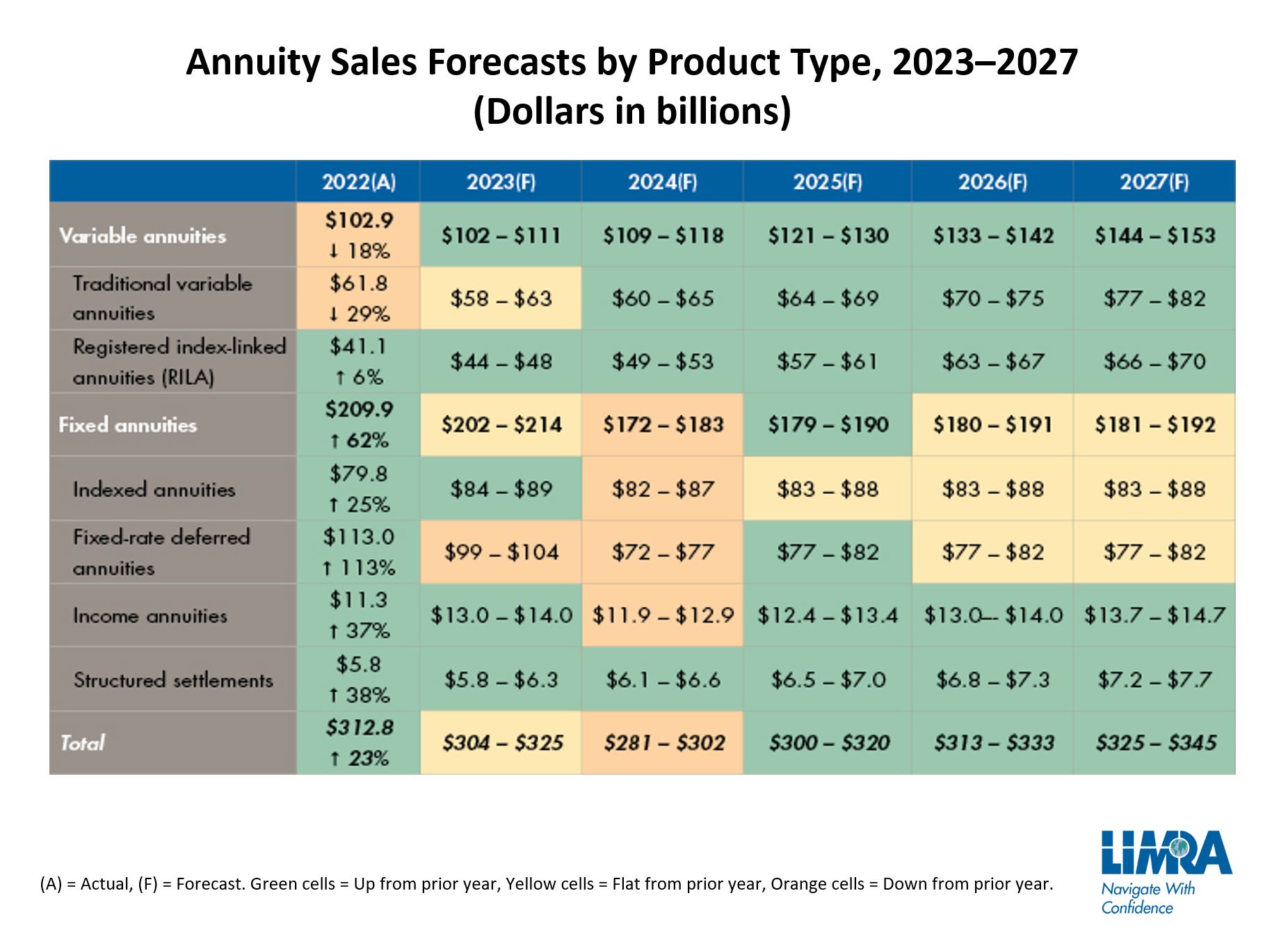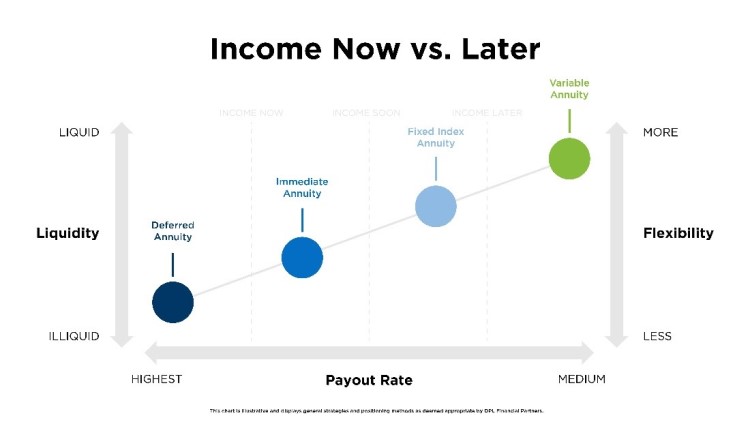All Categories
Featured
Table of Contents
Equally as with a repaired annuity, the owner of a variable annuity pays an insurance policy business a round figure or collection of repayments in exchange for the pledge of a collection of future payments in return. As stated above, while a repaired annuity grows at a guaranteed, constant price, a variable annuity grows at a variable price that depends upon the performance of the underlying financial investments, called sub-accounts.

During the accumulation phase, assets purchased variable annuity sub-accounts grow on a tax-deferred basis and are strained only when the agreement proprietor takes out those revenues from the account. After the accumulation phase comes the earnings stage. With time, variable annuity possessions should theoretically boost in value till the agreement proprietor decides she or he wish to start withdrawing money from the account.
One of the most significant problem that variable annuities generally present is high price. Variable annuities have several layers of charges and costs that can, in aggregate, develop a drag of up to 3-4% of the contract's worth yearly. Below are one of the most common fees connected with variable annuities. This expense makes up the insurance company for the risk that it thinks under the regards to the agreement.
Understanding Financial Strategies Key Insights on Your Financial Future What Is the Best Retirement Option? Advantages and Disadvantages of Fixed Index Annuity Vs Variable Annuity Why Variable Annuity Vs Fixed Indexed Annuity Is a Smart Choice Deferred Annuity Vs Variable Annuity: A Complete Overview Key Differences Between Fixed Income Annuity Vs Variable Growth Annuity Understanding the Key Features of Long-Term Investments Who Should Consider Choosing Between Fixed Annuity And Variable Annuity? Tips for Choosing Annuities Variable Vs Fixed FAQs About Fixed Vs Variable Annuity Common Mistakes to Avoid When Planning Your Retirement Financial Planning Simplified: Understanding Tax Benefits Of Fixed Vs Variable Annuities A Beginner’s Guide to Fixed Vs Variable Annuity Pros And Cons A Closer Look at Fixed Annuity Or Variable Annuity
M&E cost charges are calculated as a percentage of the agreement value Annuity companies hand down recordkeeping and various other management prices to the contract proprietor. This can be in the form of a level yearly fee or a percentage of the agreement value. Administrative costs may be included as part of the M&E danger cost or might be examined independently.
These fees can range from 0.1% for passive funds to 1.5% or more for proactively managed funds. Annuity agreements can be personalized in a variety of methods to offer the details needs of the contract owner. Some common variable annuity riders include assured minimum build-up benefit (GMAB), assured minimum withdrawal benefit (GMWB), and assured minimum earnings advantage (GMIB).

Variable annuity payments give no such tax deduction. Variable annuities often tend to be extremely inefficient lorries for passing wide range to the next generation due to the fact that they do not enjoy a cost-basis change when the initial agreement owner passes away. When the owner of a taxable investment account passes away, the price bases of the investments held in the account are adjusted to reflect the market rates of those financial investments at the time of the owner's fatality.
Understanding Financial Strategies A Comprehensive Guide to Pros And Cons Of Fixed Annuity And Variable Annuity Defining Indexed Annuity Vs Fixed Annuity Pros and Cons of Annuities Fixed Vs Variable Why Choosing the Right Financial Strategy Matters for Retirement Planning Annuity Fixed Vs Variable: How It Works Key Differences Between Retirement Income Fixed Vs Variable Annuity Understanding the Rewards of Fixed Index Annuity Vs Variable Annuity Who Should Consider Retirement Income Fixed Vs Variable Annuity? Tips for Choosing Fixed Indexed Annuity Vs Market-variable Annuity FAQs About Planning Your Financial Future Common Mistakes to Avoid When Planning Your Retirement Financial Planning Simplified: Understanding Variable Annuities Vs Fixed Annuities A Beginner’s Guide to Fixed Vs Variable Annuities A Closer Look at How to Build a Retirement Plan
Such is not the situation with variable annuities. Investments held within a variable annuity do not receive a cost-basis modification when the initial owner of the annuity passes away.
One significant problem connected to variable annuities is the capacity for conflicts of interest that may feed on the component of annuity salespeople. Unlike a financial consultant, that has a fiduciary responsibility to make investment choices that profit the customer, an insurance broker has no such fiduciary obligation. Annuity sales are extremely profitable for the insurance experts that offer them due to high in advance sales payments.

Numerous variable annuity contracts include language which places a cap on the percentage of gain that can be experienced by specific sub-accounts. These caps avoid the annuity proprietor from fully joining a portion of gains that can or else be enjoyed in years in which markets create considerable returns. From an outsider's viewpoint, presumably that investors are trading a cap on financial investment returns for the abovementioned guaranteed flooring on investment returns.
As noted above, give up fees can severely restrict an annuity owner's ability to move possessions out of an annuity in the early years of the agreement. Additionally, while most variable annuities allow contract owners to withdraw a defined quantity throughout the buildup phase, withdrawals yet quantity typically result in a company-imposed cost.
Withdrawals made from a set rate of interest financial investment option could also experience a "market worth change" or MVA. An MVA readjusts the value of the withdrawal to show any kind of modifications in rates of interest from the moment that the cash was purchased the fixed-rate choice to the time that it was withdrawn.

Frequently, even the salespeople who sell them do not fully understand exactly how they work, and so salespeople sometimes exploit a buyer's emotions to offer variable annuities instead than the values and suitability of the products themselves. We believe that capitalists need to fully recognize what they possess and just how much they are paying to have it.
Decoding How Investment Plans Work Key Insights on Indexed Annuity Vs Fixed Annuity What Is the Best Retirement Option? Features of Smart Investment Choices Why Fixed Income Annuity Vs Variable Annuity Can Impact Your Future What Is Variable Annuity Vs Fixed Annuity: Explained in Detail Key Differences Between Fixed Annuity Or Variable Annuity Understanding the Risks of Fixed Vs Variable Annuity Who Should Consider Strategic Financial Planning? Tips for Choosing Variable Annuity Vs Fixed Annuity FAQs About Deferred Annuity Vs Variable Annuity Common Mistakes to Avoid When Choosing a Financial Strategy Financial Planning Simplified: Understanding Your Options A Beginner’s Guide to Smart Investment Decisions A Closer Look at How to Build a Retirement Plan
However, the very same can not be claimed for variable annuity assets held in fixed-rate investments. These properties legitimately belong to the insurer and would certainly for that reason be at threat if the business were to fail. Any type of warranties that the insurance policy company has actually concurred to provide, such as a guaranteed minimum income advantage, would certainly be in inquiry in the event of a business failure.
Possible buyers of variable annuities should recognize and consider the financial problem of the providing insurance policy business prior to entering into an annuity agreement. While the advantages and disadvantages of numerous sorts of annuities can be questioned, the real concern bordering annuities is that of viability. In other words, the inquiry is: who should have a variable annuity? This question can be tough to respond to, provided the myriad variants offered in the variable annuity universe, however there are some basic guidelines that can help investors choose whether or not annuities need to contribute in their monetary plans.
As the saying goes: "Customer beware!" This post is prepared by Pekin Hardy Strauss, Inc. Deferred annuities explained. ("Pekin Hardy," dba Pekin Hardy Strauss Wealth Management) for informational functions just and is not planned as an offer or solicitation for organization. The information and information in this article does not comprise legal, tax obligation, accountancy, investment, or various other expert advice
Table of Contents
Latest Posts
Understanding Fixed Vs Variable Annuity Everything You Need to Know About Fixed Index Annuity Vs Variable Annuity Breaking Down the Basics of Fixed Annuity Or Variable Annuity Advantages and Disadvant
Exploring the Basics of Retirement Options A Comprehensive Guide to Investment Choices What Is Fixed Income Annuity Vs Variable Annuity? Pros and Cons of Various Financial Options Why Annuity Fixed Vs
Decoding Variable Annuities Vs Fixed Annuities Key Insights on Your Financial Future What Is Fixed Vs Variable Annuity Pros And Cons? Pros and Cons of Variable Vs Fixed Annuity Why Variable Annuity Vs
More
Latest Posts